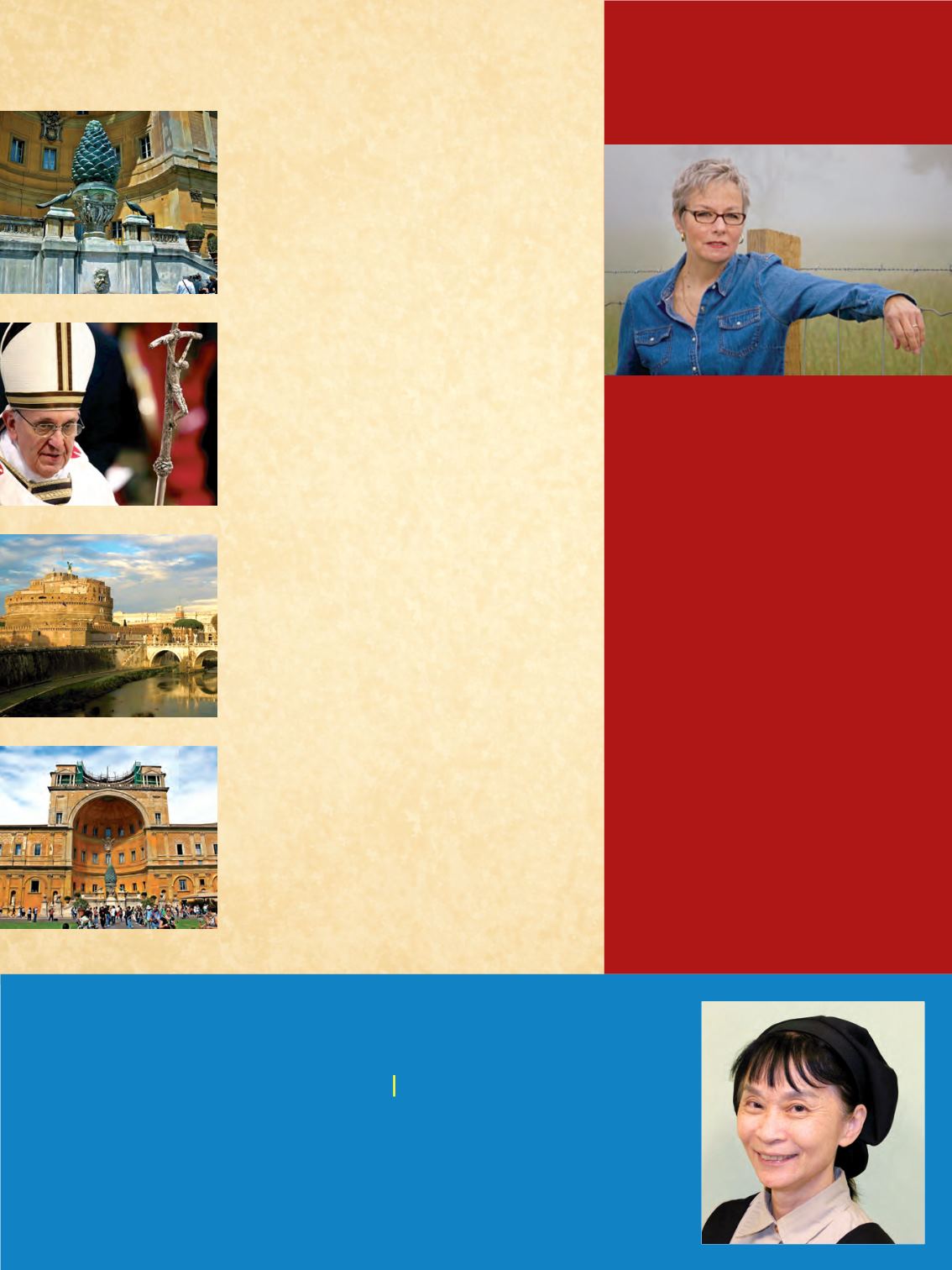

Gr ac i e H s i u ng
Congratulations
employee of the month
Fen-Hsiang Hsiung, aka Gracie, is the hardest worker we have and always has a pleasant attitude
and a smile on her face. She knows exactly what the residents want and need many times before
they even know! Gracie is an absolute asset to the Dietary Department.
- Mark Simpson, Director of Dining Services
• 8 •
The Pinecone
|
April 2017
MEET AUTHOR
BREN M
c
CLAIN
JOIN THE
BOOK BAGGERS
TUESDAY,
APRIL 25TH
9:30
am
in
the
L
arge
C
ard
R
oom
WHERE SHE WILL BE
DISCUSSING HER BOOK
ONE GOOD
MAMA BONE
ALL ARE INVITED TO
THIS SPECIAL EVENT!
THE PIGNA:
TREASURE OF
THE VATICAN
Publius Cincius Slavius, whose name appears on the
base of the sculpture, built the Pinecone statue that
now resides in the Court of the Pinecone (Cortile della
Pigna) in the Vatican, in the 1st century AD. The piece
was originally a fountain that resided in the Temple
of Isis in Campo Martius next to the Pantheon. The
Pinecone was then moved to the hall of St Peter’s
Basilica in the 8th century. In 1608, when St Peters
was being enlarged to its present form the Pinecone
was moved to its current location by Pope Paul V.
The pinecone carries a heavy symbolism in
Christianity supposedly being the fruit of the tree
of knowledge in the Garden of Eden. It represents
eternal life and enlightenment and the literal
biblical translation is “the face of God”. The pineal
gland in the brain (named for its similar shape) is
the geometric centre of the brain and is considered
the third eye or the seat of the soul. The Pope’s staff
features a pinecone symbolising the illumination of
the church. The symbolism of the pinecone is similar
in many religions and was obviously absorbed by
the Christians like many other aspects of the Greco-
Roman and Egyptian religions. The fact that it stood
in the Temple of Isis (a goddess revered by the early
Christians as the Virgin Mary and often used as a
disguise in the days of persecution) explains the
reason behind the reverence of this sculpture.
The peacocks at the base of the Pinecone are the
Christian symbol of eternal life. This, added to the
symbolism of the shedding of the feathers and
replacing them with brighter ones, alludes to the
resurrection of Christ. The eyes on the tail feathers
were also seen as the all-seeing eyes of God. The
bronze peacocks, however, were not part of the
original sculpture but are thought to be originally
taken from Hadrian’s mausoleum (now Rome’s
fortress, the Castel St. Angelo).
Thus as a whole the Pinecone is meant to be a
symbolic fountain of life. Even in its present form the
symbolism still points to the Pinecone as an emblem
of renewal in the Eternal City.
The Pigna at The Vatican
Pope Francis’ Pinecone staff
The Castel St. Angelo
The Cortile della Pigna
















